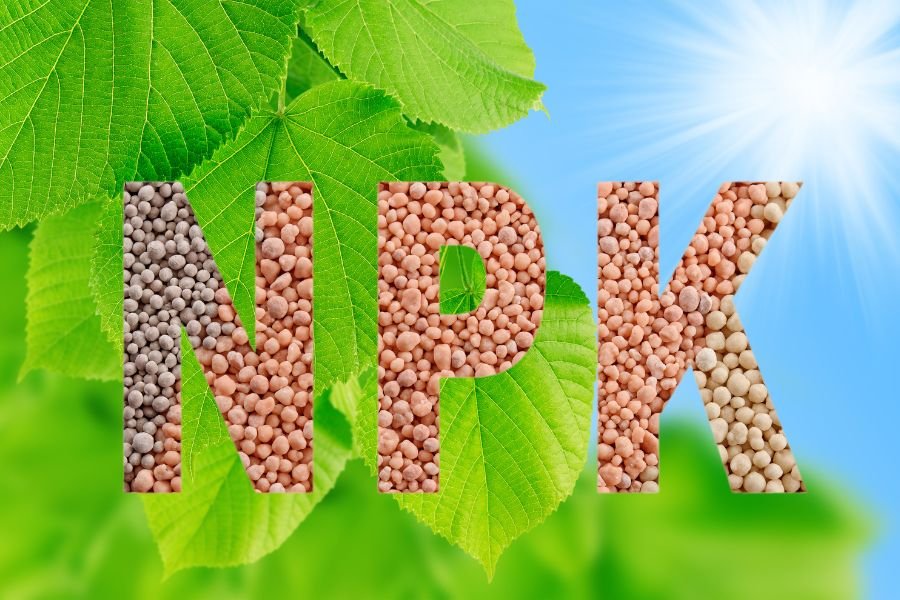When cultivating fruit trees, high potassium fertilizer plays an essential role in fruit development, quality, and yield. It helps improve the size, color, taste, and overall health of the fruit while increasing the tree’s resistance to disease and environmental stress. Choosing the right high potassium fertilizer for fruit trees can make a big difference in achieving these goals. This article will guide you through the factors to consider when selecting a high-potassium fertilizer for fruit trees.
1. Understanding Potassium’s Role in Fruit Trees
Potassium is crucial during the ripening and fruit-filling stages of a tree’s life cycle. It enhances the movement of sugars, starches, and water within the plant, which contributes to the sweetness and juiciness of the fruit. Potassium also strengthens cell walls, improving fruit firmness and increasing shelf life. For these reasons, a high-potassium fertilizer is particularly valuable for fruit trees at the flowering and fruiting stages.
2. Choosing the Right NPK Ratio

High potassium fertilizers will have a higher third number in the NPK ratio. For example, fertilizers with ratios like 15-5-35, 12-12-36, or 10-10-40 are typically considered high in potassium. When selecting a fertilizer, it’s important to look for a balanced ratio that provides a moderate amount of nitrogen (N) to support general growth without encouraging excessive vegetative growth, which can detract from fruit quality.
3. Selecting the Appropriate Form of Potassium
-Potassium Chloride (KCl)
- Source: Mined from potash ores.
- Characteristics: Contains about 60% potassium oxide (K₂O) and is the most commonly used potassium fertilizer globally.
- Best Use: Suitable for crops and soils tolerant to chloride.
- Limitations: Not ideal for chloride-sensitive crops like potatoes, tobacco, and some fruits, as high chloride levels can cause toxicity.
–Potassium Sulfate (K₂SO₄)
- Source: Derived from natural deposits or manufactured by reacting potassium chloride with sulfuric acid.
- Characteristics: Contains around 50% K₂O and also provides sulfur (17-18%), which benefits sulfur-deficient soils and sulfur-loving crops.
- Best Use: Suitable for chloride-sensitive crops and helps improve crop quality in fruits and vegetables.
- Limitations: More expensive than potassium chloride.
–Potassium Nitrate (KNO₃)
- Source: Produced through a chemical reaction between potassium chloride and nitrate sources.
- Characteristics: Contains around 44% K₂O and 13% nitrogen (N), combining two essential nutrients.
- Best Use: Ideal for high-value crops like fruits and vegetables, especially where nitrogen is also needed during fruit development.
- Limitations: Higher cost and may not be suitable for crops or soils that require low nitrogen levels.
–Potassium Magnesium Sulfate (K₂SO₄·MgSO₄)
- Source: Also known as langbeinite, it’s mined from natural deposits.
- Characteristics: Contains around 22% K₂O, 11% magnesium (Mg), and 22% sulfur (S), providing additional secondary nutrients.
- Best Use: Ideal for soils deficient in magnesium and sulfur, especially for crops like tomatoes and potatoes that benefit from magnesium.
- Limitations: Lower potassium concentration compared to other sources.
–Potassium Thiosulfate (K₂S₂O₃)
- Source: Produced from a reaction between potassium hydroxide and sulfur.
- Characteristics: Liquid form with approximately 25% K₂O and contains sulfur, which can help with sulfur deficiencies.
- Best Use: Useful for fertigation systems and crops needing sulfur and potassium simultaneously.
- Limitations: Requires precise handling and may not be suitable for all crop systems due to its sulfur content.
–Potassium Carbonate (K₂CO₃)
- Source: Produced from potash and carbon dioxide.
- Characteristics: Typically available in liquid form and contains around 56% K₂O.
- Best Use: Used in fertigation and foliar applications, often for greenhouse crops.
- Limitations: Limited sulfur content; not ideal for soils or crops that also need sulfur.
Each type has advantages and is selected based on soil properties, crop requirements, and budget considerations.
4. Consideration of Micronutrient Additions
While potassium is the main focus, additional micronutrients such as boron, zinc, and iron can improve overall fruit quality. These nutrients support various functions, such as enhancing pollination and encouraging fruit set, which contributes to a more abundant harvest. Many high potassium fertilizers also contain chelated micronutrients to help fruit trees utilize these trace elements more effectively.
5. Choosing the Right Fertilizer Formulation
High potassium fertilizers are available in different formulations, including liquid, powder, and foliar. The choice depends on the needs of your orchard, the tree’s growth stage, and application convenience:
- Water Soluble Fertilizers: Water soluble high potassium fertilizers are ideal for fruit trees and various crops requiring potassium for robust fruit development and quality enhancement. These fertilizers dissolve fully in water, allowing easy uptake by plant roots or leaves when applied via irrigation or foliar spraying.
- Liquid Fertilizers: Liquid fertilizers provide quick nutrient uptake and are especially useful during critical growth periods. They can be applied through fertigation systems, delivering nutrients directly to the root zone or as a foliar spray for faster results.
- Foliar Fertilizers: Foliar sprays are highly effective for providing potassium directly to the leaves, which is particularly helpful if the tree shows signs of potassium deficiency or if quick results are needed.
6. Application Timing and Rates
Applying high potassium fertilizer at the right time is essential for maximizing fruit quality and yield. Potassium applications are most effective during the flowering and fruit development stages, as this is when the demand for potassium is highest. Adjust application rates according to the specific fertilizer’s instructions and consider factors such as tree age, soil fertility, and anticipated fruit load.
7. Soil Testing and Monitoring

A soil test can help determine existing potassium levels in the soil, ensuring the appropriate amount of potassium is applied. Regular monitoring also allows you to track nutrient levels over time, adjust fertilization practices, and avoid nutrient imbalances. In addition, leaf tissue testing during the growing season can provide further insights into potassium levels within the tree itself, guiding further applications if needed.
8. Evaluating Fertilizer Brands and Technology
Different fertilizer brands offer varied technologies designed to enhance nutrient uptake. Some fertilizers include stabilizers, bio-stimulants, or controlled-release coatings that extend nutrient availability or improve nutrient uptake efficiency. These enhancements may be worth considering if you’re looking for a more advanced solution that maximizes the benefits of potassium fertilization for fruit trees.
Conclusion
Choosing a high potassium fertilizer for fruit trees requires an understanding of the role potassium plays in fruit quality, careful selection of the NPK ratio, and an awareness of various fertilizer formulations. By selecting a fertilizer that aligns with your soil conditions, tree growth stage, and overall orchard management strategy, you can maximize fruit yield, quality, and tree health. With these considerations in mind, your fruit trees will be well-equipped to produce the best possible harvest season after season.


